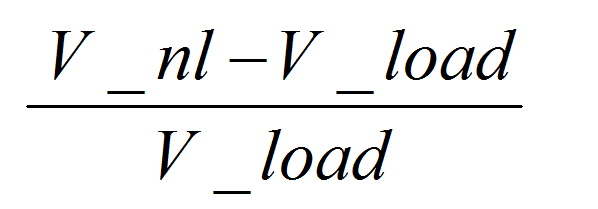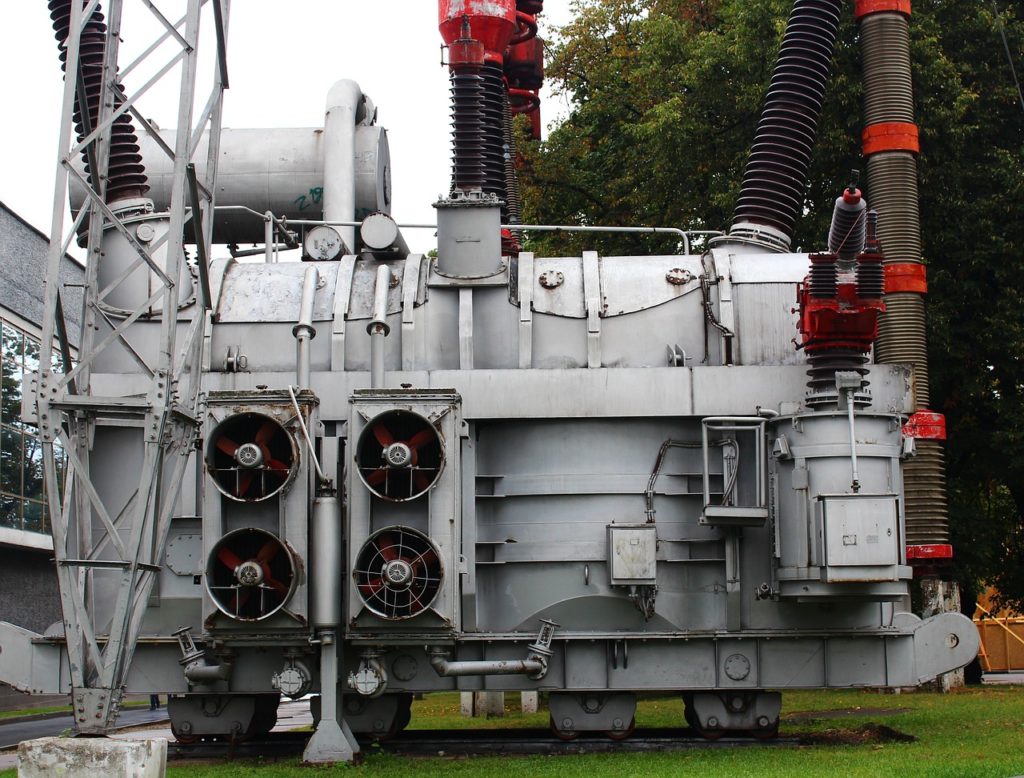To engineers, ‘regulation’ means variation of output speed or voltage as the load on that device is increased from zero to rated full load of the device. For transformers, voltage regulation can be defined as the ratio of the difference in the secondary voltage from no load to the full load to the full load voltage.
In other words, equation of voltage regulation is:

[Primary voltage is assumed to be constant]
V_nl= Secondary no load voltage
V_load= Secondary voltage for the loaded condition
When referring to a transformer as having say 5% regulation, it means that the voltage variation between no load and full load is 5% assuming constant primary voltage. Additionally, regulation need not be calculated at full load. It is normal to calculate regulation at 50% load, 80% load etc. However, the worst case is usually the full load.
Note that only the voltage magnitudes are considered. The phase angle of the voltage is not a factor in the regulation equation. Here is a simple voltage regulation calculator:
Under no load condition, transformer secondary voltage will be close to its rated value. As the load is increased from no load to its rated load, additional voltage drop occurs across the internal resistance and reactance of the transformer. Hence the net output voltage that the transformer can provide is reduced by the magnitude equal to the internal voltage drop. Transformers with larger internal impedances will have slightly worse regulation compared to transformers with normal internal impedance (typically 3% to 6% for low voltage transformers).
Poor Voltage Regulation- What can i do?
-
Review the size of transformer, cables to make sure they are sized correctly for the load.
-
If possible, select a low impedance transformer. If this is not practical consider the following.
-
Consider changing the taps on the transformer for obtaining higher secondary voltage at peak load conditions. Care should be taken as this should not lead to excessive high voltage at low-load condition.
-
Consider changing the transformer to one that has on-load tap changing (LTC) facility. Transformers with LTC automatically step the winding taps to main the desired output voltage. Typically these will be much expensive compared to regular transformers are usually used at critical installations.
-
Review the load power factor and try to make it as close to unity as possible. Both leading and excessive lagging power factor lead to poor regulation. Lagging power factor can be corrected by adding power factor capacitors. Leading power factor can be corrected by use of active filters injecting inductive vars in to the system or by few other methods.
-
In addition to transformer impedance, the impedance of the electric power source also contribute to poor regulation. Consider changing to a ‘stiffer’ source like a larger generator or a utility source with larger MVA rating.
Negative Voltage Regulation – Is it possible?
It is interesting to note that negative voltage regulation is possible. That means secondary voltage can increase when the transformer is loaded!!. This usually happens when there are excessive power factor correction capacitors (overcompensation) at the secondary side of the transformer or if the load has a leading power factor.
Zero Voltage Regulation – Is it possible?
Yes, zero regulation is possible for a slightly leading power factor situation. For large leading power factor, the regulation will be negative.
The following calculator can be used to calculate the voltage regulation considering the load power factor. Only lagging power factor which is the most common scenario can be used with the calculator.
Options to regulate voltage at load level- What are they?
Often times the facility transformer is difficult to change and other methods to mitigate poor service voltage regulation may be too expensive. If only few equipment in the facility is being affected, a localized voltage correction can be attempted. Some of the methods to regulate the voltage at an equipment level or load level are:
-
Using Constant Voltage Transformers , also called ferro-resonant transformers.
-
Electronic Automatic Voltage Regulators

